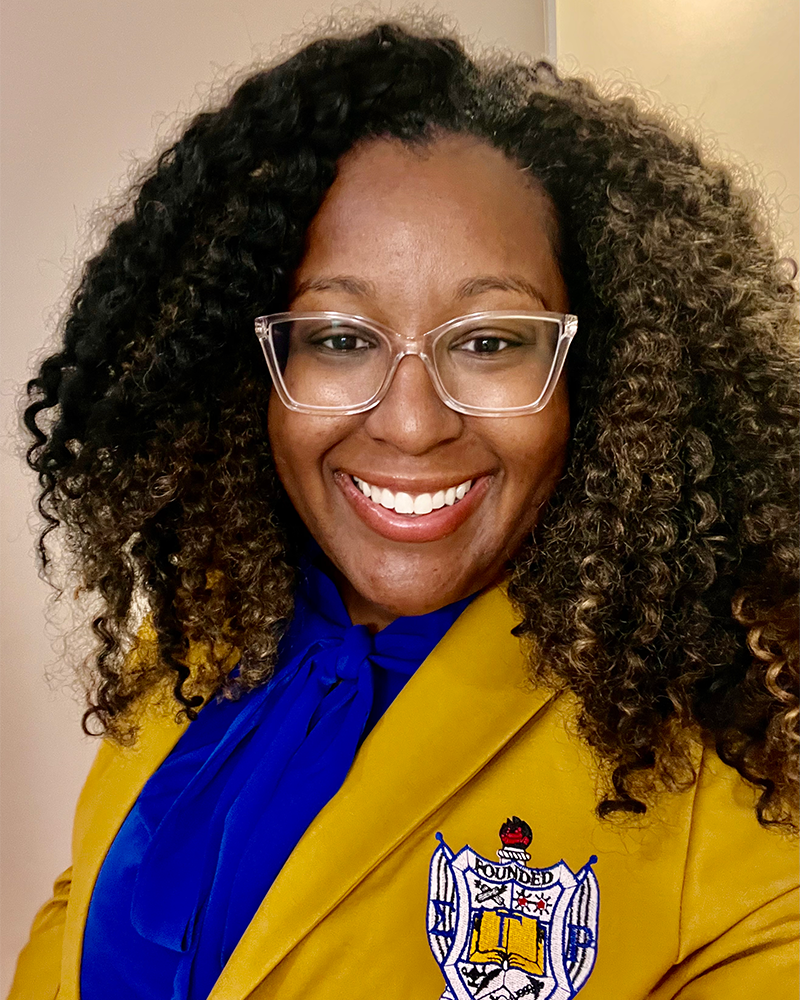
I have been interested in teaching ever since college. During graduate school, I tutored undergraduate students in introductory biology, chemistry, and math. I also made sure to take courses in teaching pedagogy. When I started my NICHD postdoctoral fellowship, I told my mentor, Dr. Gisela “Gigi” Storz, about my interest in teaching. She encouraged me to explore this career option. As a result, I attended the NIH Community College Day, where I met representatives from Montgomery College. I would scour their jobs lists every so often to look for an adjunct opening, but didn’t know when they would have positions available or if they would match my skillset.

Aisha Burton, PhD
When the pandemic hit, I took the Scientists Teaching Science course offered by OITE virtually. This helped me gain confidence to teach my own course. In August of 2020, a biology position became available at Montgomery College—I applied and was offered the job.
I currently teach the lab section of Principles of Biology I (BIOL 150) at the Montgomery College, Rockville Campus. Previous semesters were virtual, but most students are back to in-person now for both the lab and lecture components. The classes have a maximum of 22 students, and there are 19 students in my current course. My students have an asynchronous lecture component, which they can complete on their own time without going to a live session. Other sections of this course do offer in-person lecture and lab.
Through this experience, I learned a lot about the time commitments involved in teaching. Logistically, virtual classes take about the same amount of time to prep, but engaging students virtually can be difficult. For me, the time commitment for the lab class itself is 2.5 hours per week. We have coordinators who set up the labs for us, but I do spend another hour prepping material and grading. I have taught both the lab and lecture (lab 2.5 hours, lecture 3 hours per week). I was grateful for that opportunity, but the time commitment was challenging to manage while completing my research at the NIH.
Being able to teach while a postdoctoral fellow at the NIH has helped me grow professionally as an educator. I have learned how to create a syllabus, generate and grade assessments, and assess the time commitment per course. Most importantly, I feel more confident in my teaching methods. I can meet my students where they are , which might mean that I offer more resources or explain a topic in a different way so that everyone can understand. My current career goal is to be a principal investigator at an R1 institution but being an adjunct has opened my eyes to the different types of teaching positions that are accessible to me. For example, I could work in an industry position full-time while teaching adjunct during my free time; or move towards a smaller institution.
If you are interested in teaching, take the Scientists Teaching Science course, which is offered at no cost to NIH fellows. After taking this course, you will receive ob announcements for adjunct and full-time teaching positions. The NIH Foundation for Advancing Education in the Sciences (FAES) also has opportunities for fellows to teach. I also recommend setting a Google search for jobs in your area of interest. Good luck!
Want to hear more from Dr. Burton? She will serve on the “Cultivating the Next Generation of Researchers” panel at the NICHD 60th Anniversary Symposium on October 17, 2022. Check out the event website for more information!
